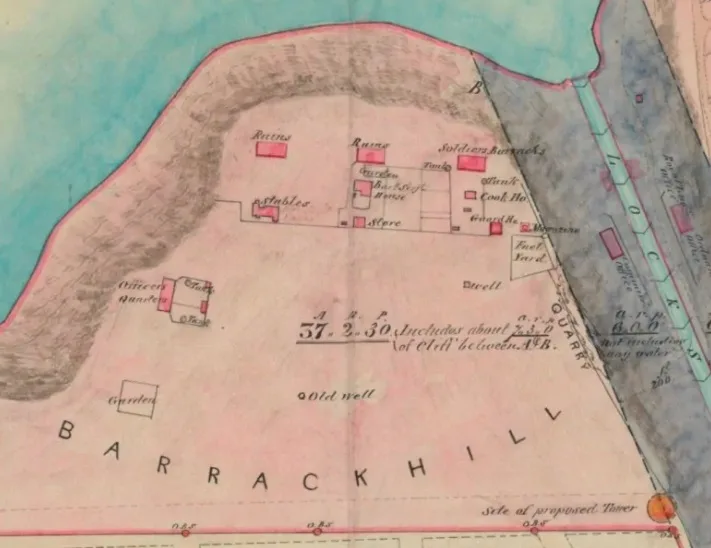
Why this Parliament Hill team is "excavating the outhouses"
Buried beneath the flowers, trees and statues dotting the grounds of Parliament Hill are the remnants of a military complex that predates both Confederation and the founding of Ottawa.
An archeology team has been working since April to unearth the ruins of the complex as part of the ongoing renovations to Centre Block.
What they've uncovered so far — barracks, an old guardhouse, and what was the former city of Bytown's first jail — is just a small tidbit of what may be to come.
The complex contains the remnants of what existed on Parliament Hill before Centre Block was built, during the time the Rideau Canal was first being constructed.
"This was the headquarters for the entire canal construction for the soldiers," said Stephen Jarrett, archeology project manager with Centrus, a consortium providing architectural and engineering services for the Centre Block rehabilitation project.
SEE ALSO: 65 million-year-old fossils found in Saskatchewan
COINS, MILITARY TAGS, OTHER ITEMS
The canal's construction was overseen by Lt. Col. John By, for whom Bytown was named.
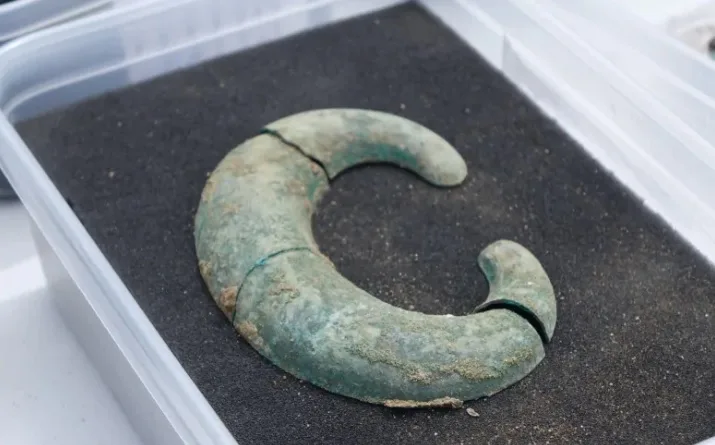
This gorget was found during excavations of Parliament Hill in the spring of 2019. It dates to the time the Royal Sappers and Miners had a military complex on the hill during the construction of the Rideau Canal. (Kimberley Molina/CBC)
Three barracks, a guardhouse, a jail, stables and cookhouses were all built on the north half of the hill starting in 1826 for the Royal Sappers and Miners Regiment, who were tasked with the backbreaking work of digging out more than 200 kilometres of earth from the Ottawa River to Kingston, Ont.
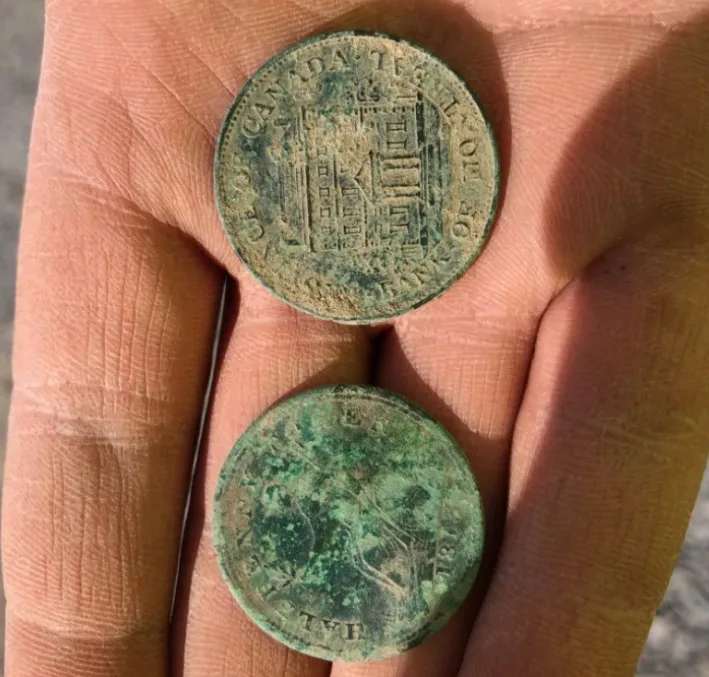
Two coins from 1813 and 1844 were uncovered on Thursday. (Public Services and Procurement Canada )
The items uncovered so far include a range of military items: chin straps, tags, gorgets — which officers often wore to hold their neckties in place — and other domestic items, like coins.
CHECK THE OUTHOUSES
But there might be more left to uncover, in a somewhat unusual spot: the privies.
"It's an excellent place to dispose of things," said Jarrett.
The complex had several multi-chambered outhouses to accommodate the 150 soldiers, plus around 40 of their wives, who all lived in the barracks.
With no modern-day plumbing, it doesn't take much to imagine the odour.
"You need to keep the smell down from the human waste, and so you put fill layers on top in order to keep the smell down," Jarrett said.
"So that comes with all the broken dishes and anything else that can help keep that smell down."
One such latrine was built south of where the entrance to the Senate is now, near the east side of Centre Block. But there are likely many more dotting Parliament Hill.
"Privies fill up over time," Jarrett said. "So they do get moved through time, as well."
RELATED: Centuries-old fortifications found in Quebec City
OTTAWA'S FIRST JAIL
Bytown became a city and was renamed Ottawa on New Year's Day, 1855.
Before Ottawa became the country's capital — or even a city, for that matter — it was a small town that didn't have a jail. Prisoners had to be held at the courthouse in Perth, Ont., instead.
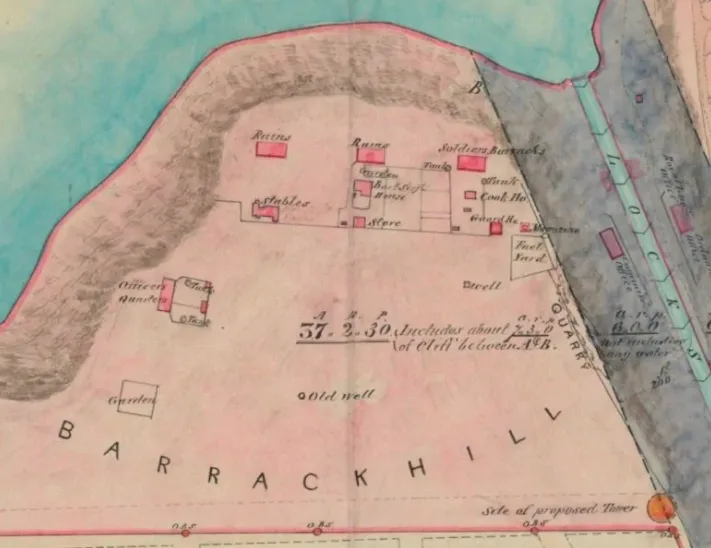
An 1853 map of Barrack Hill — now known as Parliament Hill — shows where the soldiers' barracks, officers' quarters, stables and guardhouse used to be. (Public Services and Procurement Canada)
The military had the only three cells in the community, located in the back of the jailhouse (which was later converted to a hospital).
"The three cells were some of the only places to hold individuals properly," Jarrett said. "So the military allowed the constables to hold prisoners inside their jailhouse until they were able to transport them all the way to [Perth]."
Three years after Ottawa came into existence, it was named the capital of the United Province of Canada by Queen Victoria.
Soon afterwards, the military complex was demolished so that the first parliament buildings could go up.
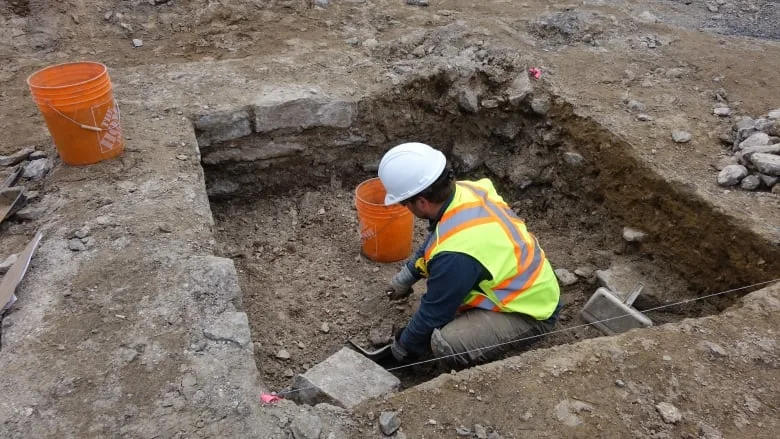
A worker sifts through the remnants of the site of the old guardhouse and jail cells just east of Centre Block. A variety of items have been found there, including pins and chin straps. (Kimberley Molina/CBC)
The excavation of the guardhouse and barracks is set to be completed by the fall. It's expected to cost around $1.2 million and is being paid for by Public Services and Procurement Canada as part of the budget for the Centre Block renovations.
The artifacts will be cleaned and analyzed by the department before being put on display for the public.
This article was originally posted on CBC.ca by Kimberley Molina.










